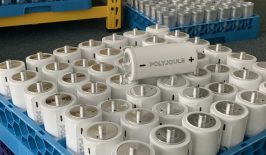Major challenges call for creative solutions.
Case in point: Scientists in Japan have found a way to mix used diapers into a building material for housing. The result? More sustainable and affordable places to live.
The breakthrough was announced by a team of researchers at the University of Kitakyushu, according to their report in a new paper published in the journal Scientific Reports. In its first use case, the material was used in the construction of a 36-square-metre, single-story home in Indonesia.
More than a quarter less sand to build a home
The Indonesian concept home replaced roughly 27 percent of the sand traditionally used in such construction with nappy waste. Different building components allowed for different ratios without compromising strength. Walls, for example, could use concrete infused with up to 40 percent used diapers. A lower proportion was required for structural components like columns and beams. Such reductions can have a significant impact on a practice (cement production) that consumes roughly 50 billion tonnes of sand annually and is responsible for nearly 7 percent of worldwide greenhouse gas emissions.
The process: From diapers to concrete
Incorporating shredded diapers into concrete involves collecting and washing used disposable diapers, then shredding them into smaller pieces. The shredded diapers are then mixed in specific proportions with traditional construction materials like cement, gravel, sand, and water. After thorough mixing, the concrete mixture is allowed to cure, resulting in a durable and strong material. Testing ensures compliance with structural requirements and building codes.
Less sand, less landfill
At scale, the diaper-infused material would significantly reduce the number of nappies in landfills while using less sand, a key ingredient in concrete. Currently, roughly 30 to 40 billion diapers end up in landfills in North America alone. Their slow decomposition, due to the presence of plastics, contributes to an ever-growing waste problem. Meanwhile, impending sand scarcity paints a worrisome picture for a world projected to experience a 45 percent surge in demand by 2060. Sand is the second-most utilized resource worldwide, vital for construction. Without proper sand management, consequences include destructive floods and storms that can devastate communities and habitats.
Practical and environmental challenges
According to Christof Schröfl, a chemist specializing in sustainable building materials at Dresden University of Technology, the project represents a significant step forward. However, he highlights the potential challenge of transporting diaper waste to processing plants or construction sites, which could diminish some of the environmental benefits. Schröfl also proposes exploring the use of wood-based composite materials for walls as a means to further enhance the eco-friendliness of these affordable homes.
A major obstacle to implementing the material on a larger scale is the separation of diapers from the general waste stream. In countries like Indonesia, where only a small fraction of plastics are recycled, the lack of an effective system for managing and segregating diapers poses a significant hurdle. Advancements in waste management and recycling systems will be necessary to make this eco-friendly housing solution more viable.








